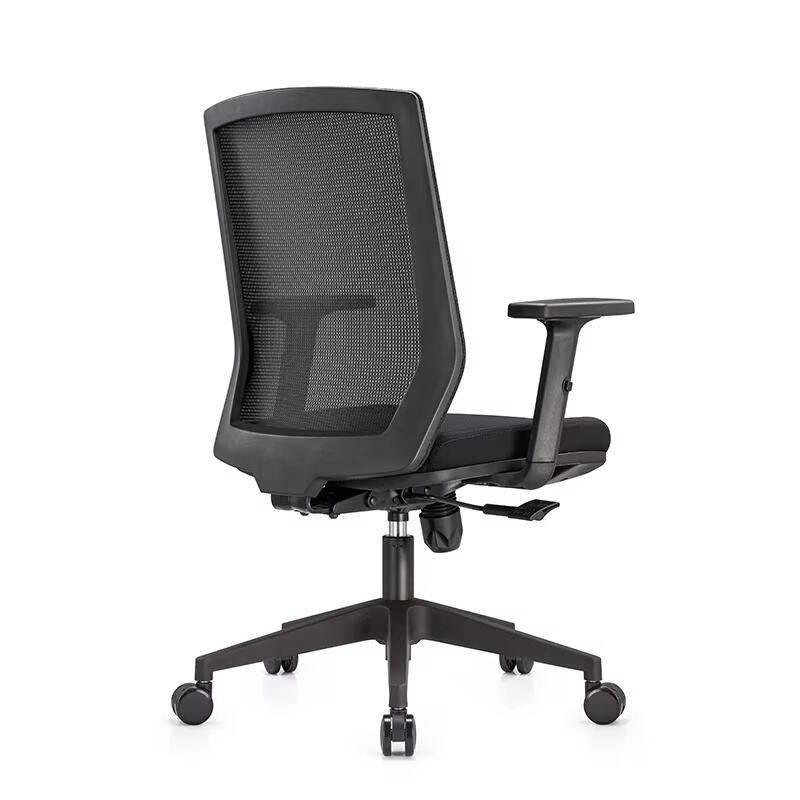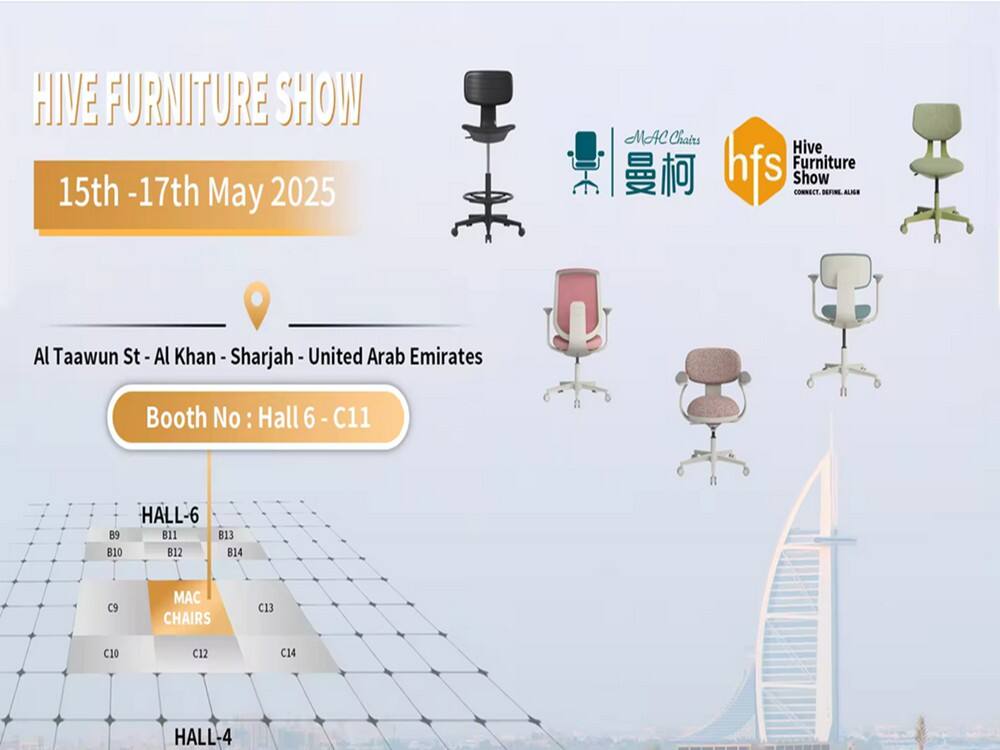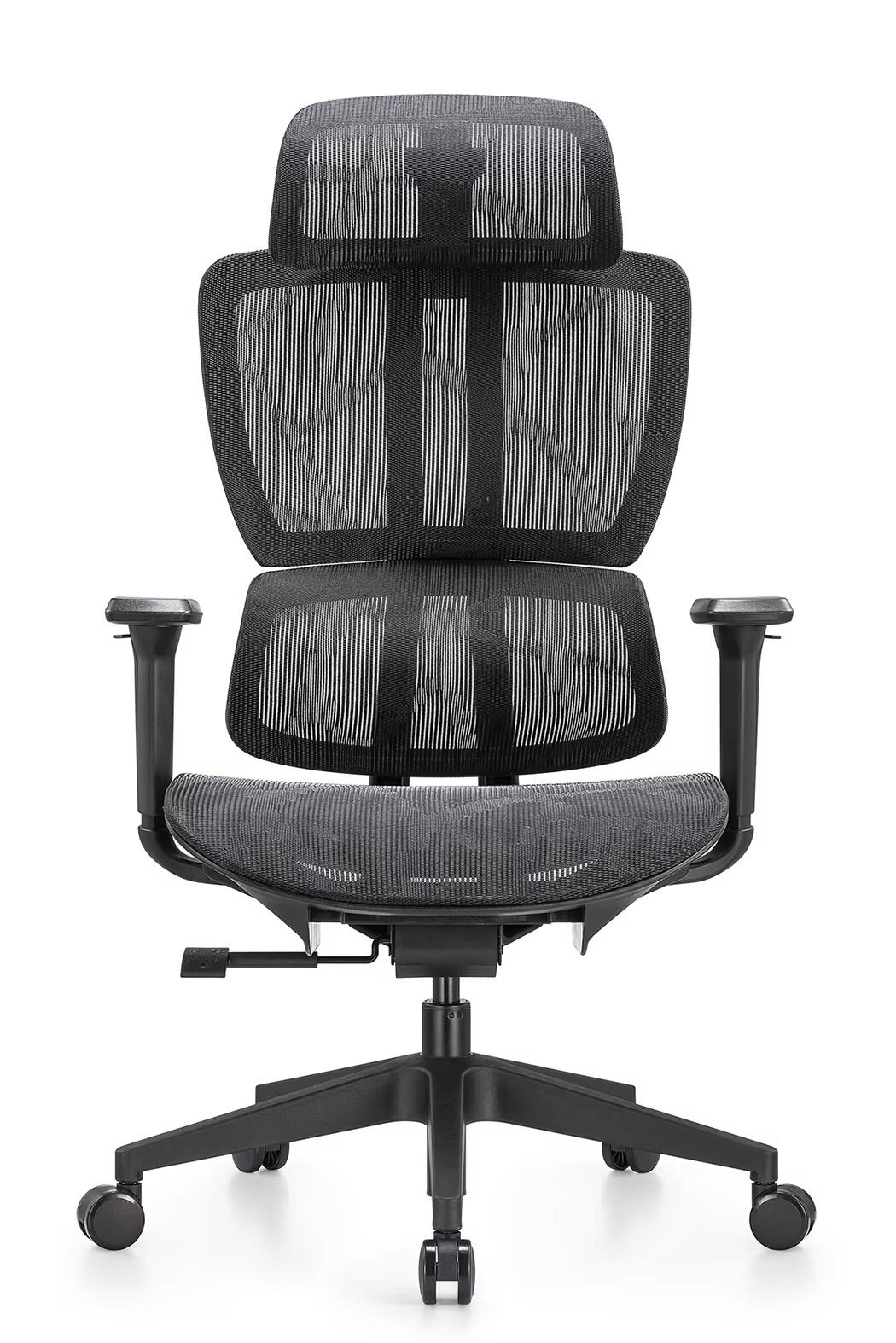
Hiểu về Độ Ergonomics của Ghế Điều Hành và Sự Phù Hợp với Cơ Thể
Chọn một ghế giám đốc việc lựa chọn chiếc ghế phù hợp hoàn hảo với loại cơ thể của bạn là yếu tố then chốt để duy trì sự thoải mái và năng suất trong suốt những ngày làm việc dài. Chiếc ghế phù hợp có thể ảnh hưởng đáng kể đến tư thế, giảm căng thẳng về thể chất và nâng cao trải nghiệm làm việc tổng thể. Khi các chuyên gia ngày càng dành nhiều thời gian hơn tại bàn làm việc, tầm quan trọng của một chiếc ghế điều hành được thiết kế vừa vặn không thể bị đánh giá thấp.
Đặc điểm riêng biệt của cơ thể bạn đóng vai trò quan trọng trong việc xác định các tính năng ghế điều hành nào sẽ phục vụ bạn tốt nhất. Từ các yếu tố về chiều cao và cân nặng đến nhu cầu ergonomics cụ thể, mọi khía cạnh trong việc lựa chọn ghế cần được điều chỉnh phù hợp với yêu cầu thể chất của bạn. Hãy cùng khám phá những yếu tố thiết yếu giúp bạn đưa ra quyết định sáng suốt khi mua chiếc ghế điều hành tiếp theo.
Các Tính Năng Chính Của Ghế Điều Hành Dành Cho Các Dáng Người Khác Nhau
Các Tính Năng Điều Chỉnh Dành Cho Người Cao và Người Thấp
Những người cao cần ghế điều hành có tựa lưng cao hơn và độ sâu ghế lớn hơn để hỗ trợ đúng cách cho vóc dáng của họ. Hãy tìm những chiếc ghế có dải điều chỉnh chiều cao ghế vượt quá 22 inch và độ sâu ghế có thể phù hợp với chân dài hơn. Tính năng đệm ngồi kéo dài giúp người dùng cao hơn tránh cảm giác khó chịu do chân bị chìa ra ngoài mép ghế.
Ngược lại, những người thấp hơn nên tập trung vào các loại ghế điều hành có độ sâu ghế điều chỉnh được, có thể rút ngắn để đảm bảo hỗ trợ lưng đầy đủ khi ngồi sát vào tựa lưng. Thiết kế mép ghế dạng thác nước đặc biệt quan trọng đối với người dùng nhỏ con nhằm ngăn ngừa điểm tì đè phía sau đầu gối. Chiếc ghế lý tưởng cũng nên có tay vịn điều chỉnh được, có thể hạ thấp đủ để duy trì tư thế tay phù hợp khi gõ phím.
Xem xét về Khả năng chịu tải và Hỗ trợ
Các trọng lượng cơ thể khác nhau đòi hỏi mức độ hỗ trợ khác nhau từ một chiếc ghế điều hành. Ghế văn phòng tiêu chuẩn thường chịu được trọng lượng lên đến 250 pound, nhưng nhiều ghế điều hành cung cấp khả năng chịu tải cao hơn, dao động từ 300 đến 500 pound hoặc hơn. Đế ghế, cơ chế nâng khí và cấu trúc tổng thể phải được thiết kế để cung cấp sự hỗ trợ ổn định cho phân khúc trọng lượng người dùng.
Khi chọn một chiếc ghế điều hành dựa trên yếu tố trọng lượng, hãy chú ý đặc biệt đến mật độ đệm ngồi và chất lượng vật liệu. Các loại mút có mật độ cao hơn sẽ duy trì hình dạng và độ hỗ trợ tốt hơn theo thời gian đối với người dùng cần khả năng chịu tải trọng lớn hơn. Khung ghế nên được làm từ các vật liệu chắc chắn, tốt nhất là có các bộ phận gia cố và đế ngồi rộng hơn để đảm bảo sự ổn định tối ưu.
Lựa chọn Vật liệu Dựa trên Dáng Người và Nhu cầu Thoải mái
Chất liệu Thoáng khí cho Các Dáng Người Khác nhau
Kiểu dáng cơ thể có thể ảnh hưởng đáng kể đến mức độ đổ mồ hôi trong ngày làm việc, do đó việc lựa chọn chất liệu rất quan trọng để đảm bảo sự thoải mái. Ghế giám đốc có lưng bằng lưới mang lại khả năng thông thoáng tuyệt vời và đặc biệt phù hợp với những người dễ nóng hoặc có vóc dáng lớn hơn. Tính chất thoáng khí của chất liệu lưới giúp ngăn ngừa tích tụ nhiệt và duy trì luồng không khí lưu thông xung quanh cơ thể.
Đối với những người ưa chuộng các chất liệu truyền thống hơn, các loại vải hiệu suất cao hiện đại mang lại sự cân bằng lý tưởng giữa khả năng thoáng khí và sự thoải mái. Hãy tìm những chiếc ghế giám đốc bọc bằng chất liệu thấm hút ẩm, giúp điều hòa nhiệt độ cơ thể. Một số nhà sản xuất hiện nay còn tích hợp công nghệ gel làm mát vào đệm ngồi, mang lại lợi ích bổ sung trong việc điều chỉnh nhiệt độ.
Chất liệu đệm lót và hỗ trợ
Các kiểu dáng cơ thể khác nhau cần mức độ mật độ đệm khác nhau để duy trì sự hỗ trợ phù hợp và ngăn ngừa các điểm chịu áp lực. Những người nặng ký thường được hưởng lợi từ lớp đệm mút có độ cứng cao và mật độ lớn, giúp chống lại hiện tượng xẹp lún và giữ nguyên hình dạng theo thời gian. Mút nhớ (memory foam) có thể là lựa chọn tuyệt vời vì nó thích ứng với đường cong cơ thể từng cá nhân đồng thời cung cấp sự hỗ trợ ổn định.
Những người nhẹ cân hơn có thể cảm thấy thoải mái hơn với lớp đệm hơi mềm hơn, cho phép phân bổ trọng lượng tốt hơn trên toàn bộ bề mặt ghế ngồi. Tuy nhiên, lớp đệm vẫn cần cung cấp đủ độ nâng đỡ để duy trì tư thế đúng. Các thiết kế đệm mút nhiều mật độ có thể tạo ra sự cân bằng tối ưu giữa sự thoải mái và hỗ trợ cho nhiều kiểu dáng cơ thể khác nhau.

Điều chỉnh công thái học cho các tỷ lệ cơ thể khác nhau
Vị trí hỗ trợ thắt lưng
Vị trí của đệm hỗ trợ thắt lưng nên có thể điều chỉnh để phù hợp với các chiều dài thân người khác nhau và độ cong tự nhiên của cột sống. Một chiếc ghế giám đốc được thiết kế tốt cho phép điều chỉnh cả chiều cao và độ sâu của cơ chế hỗ trợ thắt lưng. Việc tùy chỉnh này đảm bảo sự căn chỉnh đúng đắn cho cột sống bất kể tỷ lệ cơ thể của người sử dụng.
Đối với những người có thân người dài hơn, hãy tìm các loại ghế có chiều cao lưng ghế kéo dài và vùng hỗ trợ thắt lưng lớn hơn. Những người có thân người ngắn hơn nên chọn ghế có hệ thống hỗ trợ thắt lưng nhỏ gọn hơn, có thể được đặt chính xác ở vị trí cần thiết. Khả năng điều chỉnh độ cứng của phần hỗ trợ thắt lưng cũng giúp phù hợp với các trọng lượng cơ thể và sở thích khác nhau.
Tùy chỉnh đệm tay vịn
Vị trí tựa tay phù hợp thay đổi đáng kể tùy theo chiều rộng vai và độ dài cánh tay. Ghế văn phòng hiện đại nên có tựa tay điều chỉnh được 4D, cho phép tùy chỉnh về chiều cao, chiều rộng, độ sâu và góc nghiêng. Mức độ điều chỉnh này đảm bảo hỗ trợ tay tối ưu bất kể tỷ lệ cơ thể như thế nào.
Người dùng có vai rộng hơn sẽ được lợi từ tựa tay có phạm vi điều chỉnh chiều rộng lớn hơn, trong khi những người có cánh tay dài cần điều chỉnh độ sâu mở rộng. Khả năng điều chỉnh góc nghiêng của tựa tay trở nên đặc biệt quan trọng đối với các công việc yêu cầu các vị trí tay khác nhau trong ngày.
Xem xét về Độ thoải mái và Độ bền lâu dài
Giai đoạn làm mềm và thích nghi
Các kiểu dáng cơ thể khác nhau có thể trải qua khoảng thời gian thích nghi khác nhau khi làm quen với một chiếc ghế giám đốc mới. Người dùng nặng ký hơn nên kỳ vọng thời gian chạy-in ngắn hơn đối với các vật liệu đệm, trong khi người dùng nhẹ hơn có thể cần nhiều thời gian hơn để vật liệu ôm sát theo hình dáng cơ thể. Hiểu rõ khoảng thời gian thích nghi này sẽ giúp đưa ra quyết định sáng suốt hơn và kiên nhẫn trong giai đoạn sử dụng ban đầu.
Theo dõi phản ứng của cơ thể bạn với chiếc ghế trong vài tuần đầu tiên sử dụng. Chú ý đến bất kỳ điểm chịu áp lực hay cảm giác khó chịu nào không được cải thiện theo thời gian, vì những dấu hiệu này có thể cho thấy sự không phù hợp giữa thiết kế ghế và kiểu dáng cơ thể của bạn. Nhiều chiếc ghế giám đốc chất lượng đi kèm chế độ dùng thử, cho phép bạn đảm bảo sự vừa vặn trước khi cam kết mua cuối cùng.
Yêu cầu bảo trì để đảm bảo độ bền
Các kiểu dáng cơ thể khác nhau có thể ảnh hưởng đến tốc độ mài mòn các bộ phận của ghế theo thời gian. Việc hiểu rõ các yêu cầu bảo trì sẽ giúp duy trì đặc tính hỗ trợ và sự thoải mái của ghế. Việc vệ sinh định kỳ và kiểm tra các bộ phận cơ khí trở nên đặc biệt quan trọng đối với những chiếc ghế phải chịu tải trọng lớn hơn.
Thiết lập lịch bảo trì dựa trên tần suất sử dụng và tác động của kiểu dáng cơ thể. Việc này có thể bao gồm việc kiểm tra thường xuyên hơn các cơ chế nâng bằng khí, siết chặt các bộ phận và làm sạch chất liệu bọc để ngăn ngừa mài mòn sớm. Một số nhà sản xuất cung cấp chế độ bảo hành mở rộng cho khả năng chịu tải trọng cao hơn, mang lại sự an tâm bổ sung.
Các câu hỏi thường gặp
Làm cách nào để tôi đo kích thước cơ thể mình một cách chính xác khi chọn ghế giám đốc?
Để đo kích cỡ ghế giám đốc phù hợp, hãy bắt đầu bằng việc đo chiều cao khi ngồi từ mặt sàn đến đỉnh đầu, sau đó đo chiều cao khuỷu tay khi ngồi và độ dài đùi. Thực hiện các phép đo này khi đang ngồi với tư thế đúng trên một bề mặt phẳng. Ngoài ra, hãy đo chiều rộng hông và ghi nhận trọng lượng cơ thể để đảm bảo thông số kỹ thuật của ghế phù hợp với nhu cầu của bạn.
Tôi nên ưu tiên khả năng điều chỉnh hay chất liệu cao cấp khi chọn ghế giám đốc?
Đối với hầu hết các kiểu dáng cơ thể, khả năng điều chỉnh nên được ưu tiên hơn chất liệu cao cấp. Mặc dù chất liệu cao cấp góp phần tăng sự thoải mái và độ bền, nhưng khả năng tùy chỉnh các thiết lập của ghế theo tỷ lệ cơ thể cụ thể của bạn lại rất quan trọng để duy trì tư thế đúng và ngăn ngừa cảm giác khó chịu trong thời gian sử dụng lâu dài.
Tôi nên thay ghế giám đốc bao lâu một lần dựa trên kiểu dáng cơ thể của mình?
Thời gian thay thế một chiếc ghế giám đốc phụ thuộc vào tần suất sử dụng và thể trạng người dùng. Nói chung, những người có trọng lượng cơ thể lớn hơn có thể cần thay ghế mỗi 3-5 năm, trong khi người nhẹ cân hơn có thể kéo dài thời gian này lên 5-7 năm. Việc bảo trì định kỳ và lựa chọn ghế có mức chịu tải phù hợp với trọng lượng cơ thể sẽ giúp tối đa hóa tuổi thọ sản phẩm.










